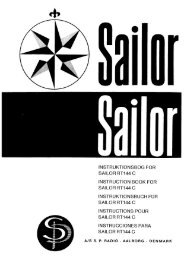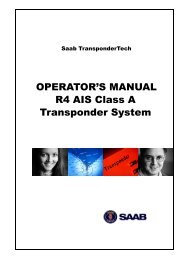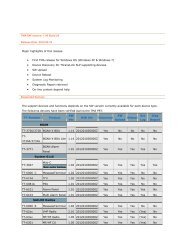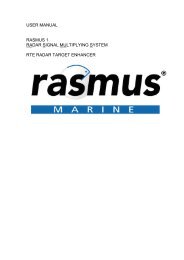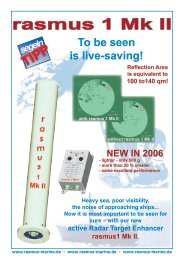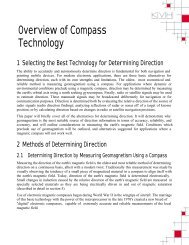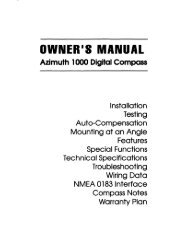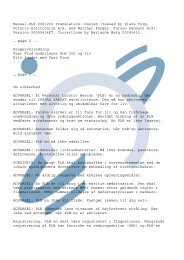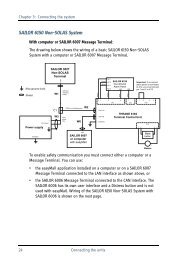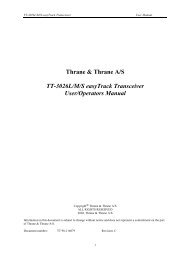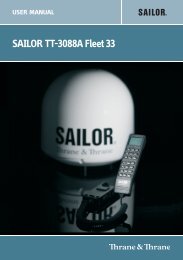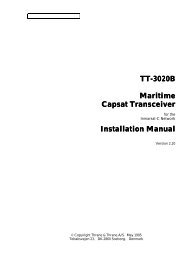TT-3000E mini-C GMDSS User Manual - Polaris-as.dk
TT-3000E mini-C GMDSS User Manual - Polaris-as.dk
TT-3000E mini-C GMDSS User Manual - Polaris-as.dk
Create successful ePaper yourself
Turn your PDF publications into a flip-book with our unique Google optimized e-Paper software.
<strong>TT</strong>-<strong>3000E</strong> <strong>mini</strong>-C <strong>GMDSS</strong> <strong>User</strong> <strong>Manual</strong><br />
3 INTRODUCTION TO INMARSAT-C<br />
The Inmarsat-C is a communication system, which enables<br />
the user to send and receive data to and from mobile<br />
terminals. The Inmarsat-C system provides the possibility<br />
of reaching remote are<strong>as</strong> where other methods of<br />
communication are impossible.<br />
3.1 SYSTEM OVERVIEW<br />
The Inmarsat-C satellite network provides the link between<br />
the mobile and the destination office. It uses four<br />
geostationary satellites to cover the world. Satellite data<br />
link coverage is complete between 70º North and 70º South.<br />
Because the Polar regions cannot be seen from<br />
geostationary satellites these regions are not covered.<br />
The Inmarsat-C system contains 2 satellite stations types<br />
that are of interest for the operator of the e<strong>as</strong>yTrack MES:<br />
The NCS stations and the LES stations.<br />
The NCS stations handle the registration of the MES in the<br />
Inmarsat-C system. The Inmarsat-C system h<strong>as</strong> one NCS for<br />
every geostationary satellite and they have names that<br />
correspond to the ocean area they cover: Atlantic Ocean<br />
Region E<strong>as</strong>t (AORE), Atlantic Ocean Region West (AORW),<br />
Indian Ocean Region (IOR) and the Pacific Ocean Region<br />
(POR). Before using the Inmarsat-C system the e<strong>as</strong>yTrack<br />
MES must be registered in one of the four ocean regions<br />
through a Login on an NCS where the corresponding<br />
satellite is visible from the current location. Normally this<br />
login procedure will happen automatically when the<br />
equipment is turned on.<br />
17



